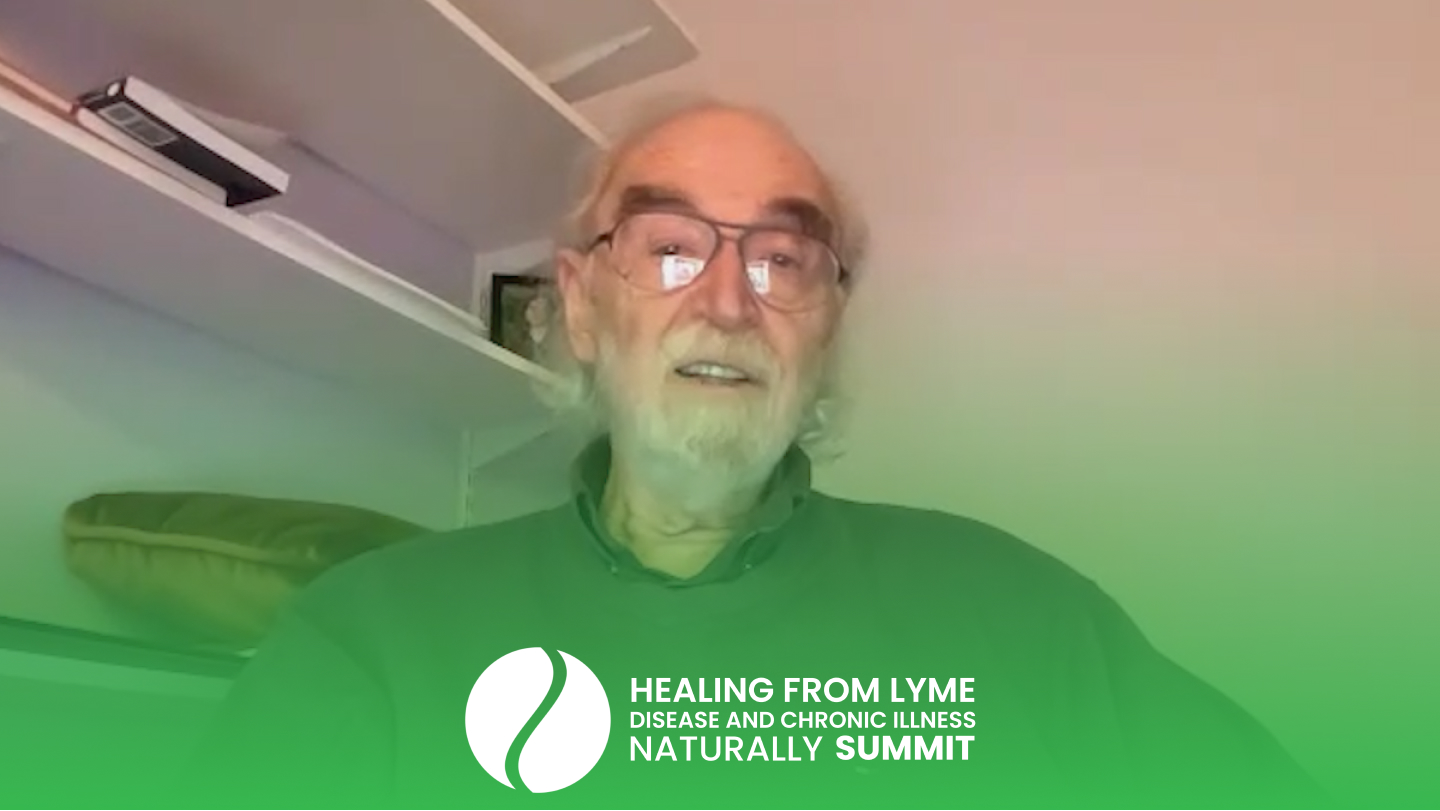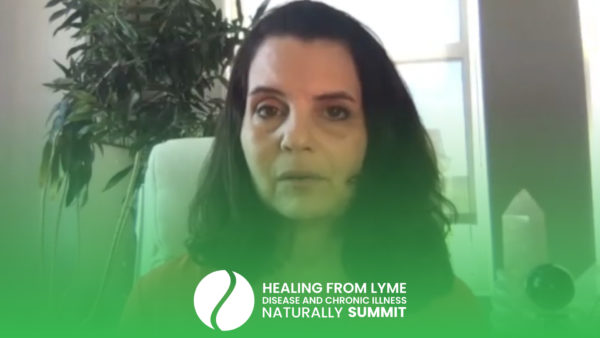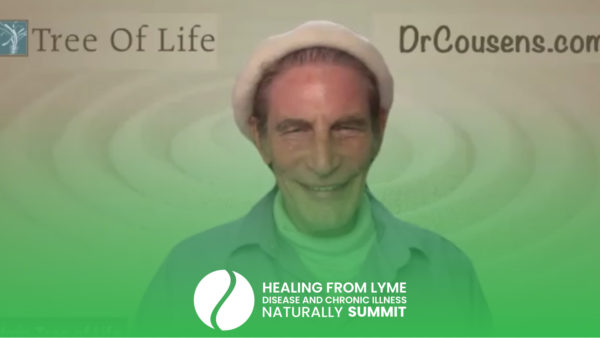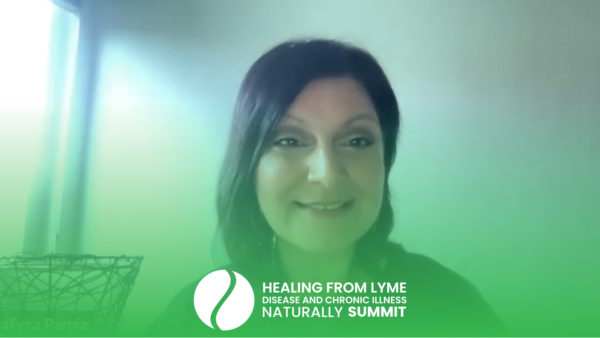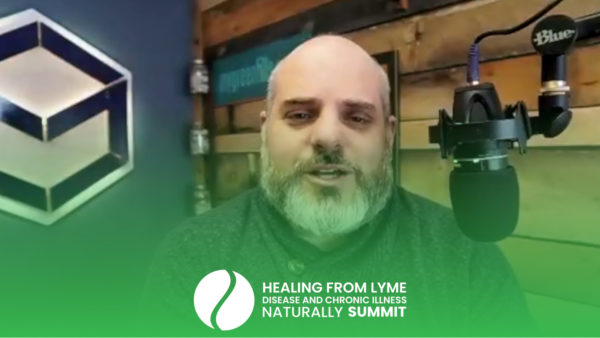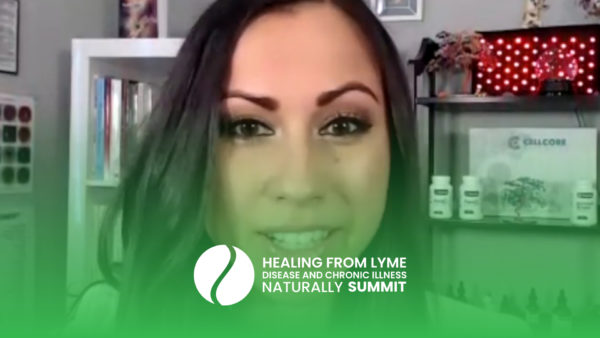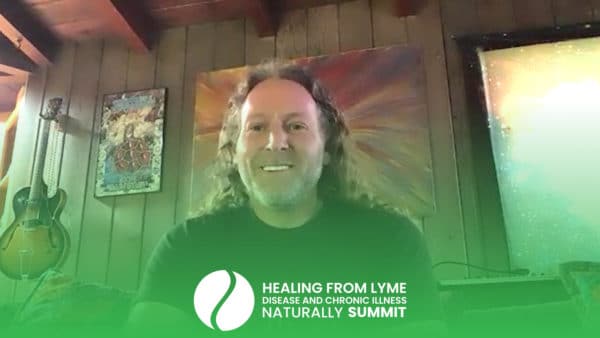Join the discussion below
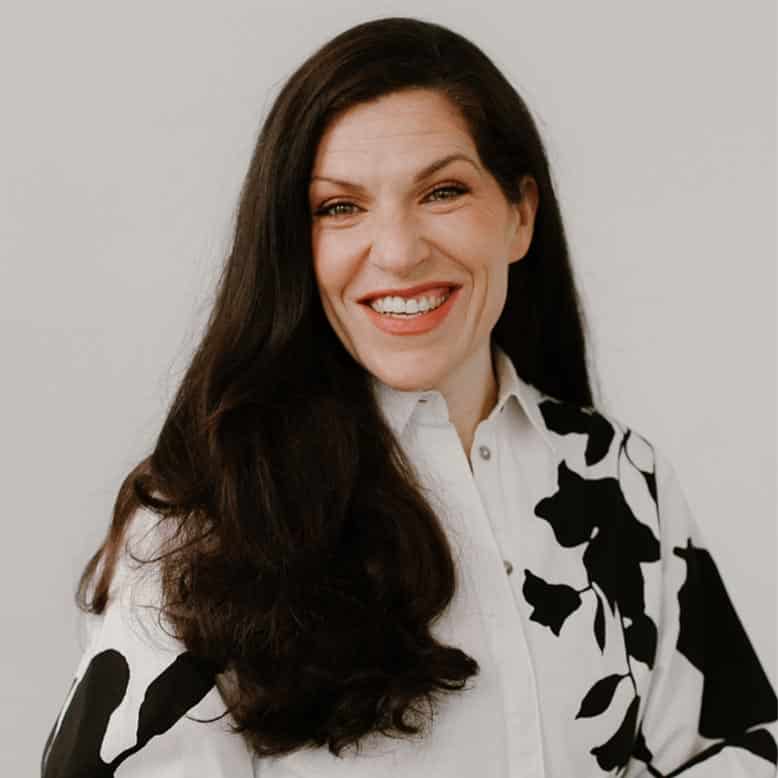
Dr. Christine Schaffner is a board-certified Naturopathic Doctor who has helped thousands of people recover from chronic or complex illnesses. Through online summits, her Spectrum of Health podcast, network of Immanence Health clinics, and renowned online programs, Dr. Schaffner goes beyond biological medicine, pulling from all systems of medicine and... Read More
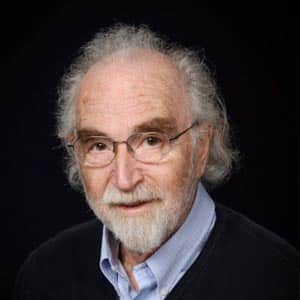
Gerald Pollack received his PhD in biomedical engineering from the University of Pennsylvania in 1968. He then joined the University of Washington faculty and is now professor of Bioengineering. He is also Founding Editor-in-Chief of the journal, WATER, convener of the Annual Conference on the Physics, Chemistry and Biology of... Read More
- Dr. Gerald Pollack, PhD discusses the fourth phase of water.
- His new book on the effect of electrical charge on the workings of nature.
Related Topics
Chronic IllnessChristine Schaffner, N.D.
Well, welcome everyone to the Healing from Lyme and Chronic Illness Summit. I’m Dr. Christine Schaffner. And today my guest is Dr. Gerald Pollack, and we’re gonna be talking about is water really wet? So welcome Dr. Pollack. It’s really an honor to have you on the summit.
Gerald Pollack, Ph.D
Oh, thank you, Christine. I’m most happy to be with you. Hope I can transmit something worthwhile.
Christine Schaffner, N.D.
Understatement. I always love how humble you are Jerry. Well, here we are, you know I’m recording this and your work has made quite an impact. And many people know about structured water and the fourth phase of water at least heard about it, through our community and through your books and all the work you’ve done, but still, it’s a relatively pioneering thought. It’s still not completely accepted mainstream. And so people who may be listening to this is still new to them. So can you just share with us what really is the fourth phase of water?
Gerald Pollack, Ph.D
Sure. Well, where do I start? The fourth phase. So we all know about the three phases of water that we’ve learned since we’re children, the solid phase ice and the liquid phase and the vapor phase. There’s been some hint for maybe a hundred years that there’s gotta be another phase. And there’s been evidence also for many years that there’s something, a different kind of water. And this started a hundred years ago when some scientists were saying, you know there are so many anomalies that is features of water that can’t be explained by thinking of water as having three phases, there must be a fourth phase. And that idea was promulgated by a few rather prominent of people.
One of them was well, the very father of modern biochemistry, Albert St. Gyorgyi, who knew there was something central about water. Most of us have learned that water doesn’t do anything. It’s like a bathtub full of water. That baths you when you wanna take a bath, something like the bathing medium for the quote important molecules of life, but St. Gyorgyi knew that that wasn’t true. And he said, one of his famous aphorisms was: Life is water dancing to the tune of solids. Famous for that one, and a bunch of others that are even more penetrating.
So he knew that water participated somehow in everything that the body does. I think they know that maybe the person who had the most profound influence, particularly on my life is the late Gilbert Ling. Gilbert lived to almost, almost made it to a hundred and he wrote many books. I think the total was seven, excuse me, perhaps in his books, he presented evidence that indeed there was another kind of water besides the usual three phases. He didn’t refer to it as a fourth phase, but he said, in biology, things are different. He said, “The water that’s inside the cell “is not really liquid water.” And if you think about it, if you cut yourself, if the water inside our body, if it were liquid water, it would come streaming out like a broken pipe. But of course, it doesn’t and so it’s not liquid water. It’s a different kind. And Gilbert presented evidence, ideas, and evidence that the molecules were somehow ordered in biological water. Well, parenthetically, it turns out its not just biological water, but all kinds of water, I’ll tell you that in a moment.
So what I mean to say in these words of introduction is that the idea of the so-called fourth phase. It stands on the shoulders of giants. I was introduced 25 years ago roughly to Gilbert Ling’s work. When I met him at a conference in Budapest, and the conference was designed to honor a biophysicist. He had passed and he was famous. His name is Aaron Stan, and people were invited to represent his two areas of interest. One was water. He also thought that there was something, a different phase or a different kind of water and muscle.
And we had done muscle. I had been studying muscle for two or three decades. And like this guy whose life was being commemorated, his view was actually rather similar to mine. Namely that the current view about how muscles contract is not right, there’s something fundamentally wrong. And so I was invited to represent that point of view, but what really caught me is Gilbert Ling. And it was not only Gilbert and his presentation, but presentations by a dozen or so other people who had evidence to support the view that at least in biological water, that the water molecules were not like liquid water, liquid water the molecules are bouncing around, randomly oriented, bouncing around fiercely on a femtosecond timescale, not at all.
This was a kind of ordered phase, kind of like soldiers standing at attention. Well, I caught that and I was most impressed and impressed enough to take one of Gilbert’s books and present them to a few of my favorite students and postdocs. And they came back and said, “This is amazing.” They said, “If Gilbert Ling is right, then all of the biology “and medicine of course is just wrong.” It’s just based on a framework that a foundation that just doesn’t make any sense.
It’s just not correct. So my first foray into this field was I decided to write a book on the subject. And the reason I decided to write a book is that Gilbert Ling’s books are not accessible and not accessible, certainly to laypeople, but absolutely inaccessible. Well, I should have put it the other way around, scientists sometimes have great difficulty reading through his stuff. Gilbert used to sit down at the typewriter word processor, bat something out and send it to the publisher. Well, it doesn’t work that way. And so in the books that I write, I try my best to make things clear, clear to anybody. I start with a philosophy that nature is simple. Nature works simply. And if it seems complicated, either you’re a bad communicator or the idea doesn’t make any sense.
Christine Schaffner, N.D.
I love that.
Gerald Pollack, Ph.D
Well, okay. So I did it and Gilbert was actually not so happy with it because the book drew a lot of attention and he felt that it kind of drew attention away from him. So he wasn’t happy with it. And there were various consequences, but we wound up being friends again, no problem. And basically supporting one another. And the book received mixed reviews. Some people almost reflexively pined that, oh, this is just more of Gilbert Ling. And everybody knows that Gilbert Ling is a crackpot. So pay no attention.
To some other reviews that were really nice. One guy, a prominent cell biologist saying this is a 305-page preface to the future of cell biology. Well, that one I liked. So anyway, having written a book and thought about it, I decided it was time to get involved. And I’m sorry, this is a long route to answering your simple question.
Christine Schaffner, N.D.
I’m listening.
Gerald Pollack, Ph.D
What is the fourth phase of water? The fourth phase of water is a phase of water, a kind of water, if you will, whose properties are not the same as any of the other kinds of water, namely, it’s an ordered phase, almost a crystal and semi-crystal and liquid crystal in phase of water. And it’s not merely a laboratory curiosity because the evidence that we have is that this water fills our body. It’s not liquid water that fills our bodies, but it’s this fourth phase of water. And of course, that means that in order to understand physiological function or pathological function, you need to know something about this kind of water, because it plays an integral role. And I agree with St. Gyorgyi, it’s essential for life. It plays an integral part of everything that happens in life. And so we began to study it. So we found, as I said, indeed, it’s a liquid crystal and a kind of water.
I’ll just tell you a few of its properties. It grows next to hydrophilic or water-loving surfaces. So if you’ve got, for example, a gel surface right here, or some hydrophilic water-loving material, and most materials are at least to some extent, and you’ve got water sitting here and the first molecular layer of water that meets the surface, undergoes a radical transformation, it becomes ordered. And basically crystalline. And then the first layer serves as a template for the growth of the second layer and so on.
And these layers, these sheets keep growing. So that’s one feature. And if you look at one of these layers at perpendicular to the face of the layer, you see a honeycomb, so hexagons. And so you’ve got these sheets of hexagon. So that’s one feature of the order. Second feature is that it’s not neutral. So ordinary water is neutral, and this water turns out, typically has negative charge. And we found that experimentally because we suck microelectrodes in this region of water. And if you stick the electrode in, these are fine-tipped electrodes that come to a point of less than one micrometer.
And in fact, parenthetically, they’re invented by the same Gilbert Ling, same guy. He should have gotten two Nobel Prizes for that. But of course, he was a controversial guy and controversial people don’t get Nobel Prizes. So anyway, however, if you’re thinking, if this is negative, there must be an equal and opposite positive somewhere because it all starts from neutral water molecules.
So where is that? Well, we found out that in this so-called fourth phase zone, we call it exclusion zone because as a liquid crystal, just like ice, for example, it excludes all kinds of contaminants. So we call that exclusion zone or EZ water, fourth phase, EZ negative charge. And the positive charge is beyond that region in the ordinary liquid water that sits beyond EZ. So it’s kind of like a battery. You’ve got a negative charge here and positive charge here. And in fact, we showed in the laboratory that you can stick one electrode into the negative and one electrode into the positive, and you can get electricity out of it, electrical energy. And that electrical energy can even light a light bulb.
We demonstrated in the laboratory. So just parenthetically, this has enormous potential because what you’re dealing with is light. I didn’t tell you about light yet. You’re talking about water plus and minus. So it’s like a battery. So whenever you’ve got a battery, batteries need to be charged in some way, your smartphone. And I think by the way, I’m the only person on the face of the earth who has no.
Christine Schaffner, N.D.
You’re smart.
Gerald Pollack, Ph.D
Well, yeah, for reasons very well. But actually, there’s another reason, I’m over-connected. And so this helps a little bit, just a little. Anyway so, how do you charge the battery? And let me tell you, I scratched my head and the people in my lab scratched our collective heads for a few years, and we couldn’t figure it out, because unlike the smartphone, you can’t plug it into the receptacle in the wall or anything like that. And so finally we figured out the obvious, it comes from light. It should have been obvious, but it wasn’t. It was actually discovered by a student in the laboratory an undergraduate student who like many of them, he was doing what he wasn’t supposed to do.
So we had this little chamber where we’re studying fourth phase of water. And he noticed that standing beside him was a gooseneck lamp. So he picked up a lamp, shined it on the chamber and where he was shining the light of the fourth phase or exclusion zone, water grew enormously. He called me in. And I said you wanted to show me this because he thought it was interesting. And I said to him, “Well, why don’t you take the lamp away? “And see what happens.” Thinking some kind of artifact.
And sure enough, he took away the lamp and this expanded zone, a fourth phase order went back in a matter of tens of minutes, back to the original. So after that, we studied in detail, the effect of different wavelengths of light to see which wavelengths were responsible for expansion or growth, basically for fueling the growth of this kind of water. It turned out to be not visible light, but infrared light. And so a lot of people don’t know, they think infrared light.
Oh, yeah, when I turn on the oven, the electric oven, I see this glowing red-orange coils and they’re hot, warm, they’re generating infrared, but the truth is that infrared energy is all over the place, it’s not exactly the same as heat, but the two are sort of closely corresponding and anybody could demonstrate, all you need to do is take a camera that instead of having a sensor that’s sensitive to ordinary visible light, is sensitive to infrared light and see what’s in the military for a nightlight, and you got a beautiful image of everything around you. So it means that in complete darkness, no visible light at all, all of the infrared energy that you’ve got is, I mean, it’s all around it’s fully available, which means that there’s a lot of EZ or fourth phase water around us all the time, because the energy necessary for producing it is freely available. It’s there. And in terms of our body, of course, as you know, there’s metabolic energies, producing heat and well, essentially infrared energy.
So you and I have got infrared energy coming from outside and also coming from inside, plenty of that stuff available for building EZ water. Okay, so I’ve gone at length to respond to a simple question, EZ as ordered. It’s usually negatively charged and it’s built by infrared energy and it’s gotta be central for everything that we do.
Christine Schaffner, N.D.
Yeah, brilliant. And it’s what a beautiful design and nature. And as you mentioned in the beginning, we make things complicated, right. And I’m a clinician, I see people who have stories and loads of labels and blabs and they’ve been through so much, right. And I have a ton of compassion and empathy for them. And my job is how do we get them feeling good? And since we’ve learned about your work and really kind of brought it in clinically, I think these principles ring some true that are so foundational to health. And even no matter what someone’s sitting in front of me with, I just keep on thinking of their health is only as much exclusion zone, restructured water they have in their body to really, do all the things that we need necessary.
I mean, I see structured water, exclusion zone on fourth phase of water central to maintaining our electrical charge or energy or the flow dynamics in the body, the circulatory system, I think even the lymphatics, I think are probably tied to that as well. And so now I’ve been, that from a clinical standpoint, I’m always like, “How do we get people to have more “exclusion zone in their water? “And what disrupts that as well?” And so, Jerry, you also wrote a book about the gels inside the cell. And so you gave us this broader picture of what EZ water is fourth phase of water, structured water. I’m just using those words. ‘Cause, everybody kinda interchanges them.
Gerald Pollack, Ph.D
Yeah, I do too.
Christine Schaffner, N.D.
I want people to just kind of have that knowledge, we’re talking about the same thing. And so you gave us this broad view, within the nature within our bodies, but then I’m bringing this kind of into the cell because I think that’s an important place to look, especially when we’re thinking of people who have like low energy or sick, like what do we know about the exclusion zone water inside the cell? And what’s been some of your conclusions about that?
Gerald Pollack, Ph.D
Sure. And that’s a really good question. First physiologically, one of the main messages in the earlier book “Cells, Gels and the Engines of Life” is how the EZ water, at that time, we didn’t use the term EZ or fourth phase. We called it structured, which everybody else had in the past. So pardon me if I go back to yet another term describing essentially the same thing. Actually, structured it’s a poor word as definition because everything has structure. So it doesn’t really help a lot, but we’re guilty of having used it. And the main point of that book is not only evidence that structured water does exist, but the second major point is that when a cell acts, so this is full of structure.
Now we know EZ, fourth phase, whatever water. However, when the cell acts, when it goes into action, that is like when a muscle cell contracts, when a nerve cell conducts, when a secretory cell secretes, whatever. This water doesn’t remain the same, it undergoes a transition called the phase transition. And the transition is from EZ water, structured water to ordinary water, and then back again. And so this transition is central to essentially every major thing that cells do. And this is obviously not an accepted point of view. You’ll never see it in the textbook, but I think it’s true. And that book presents the evidence for it.
So that’s really important because the principle is that you need this kind of structured, EZ water in order for the cell to function properly. And if you don’t have enough of it, the cell will be dysfunctional. It doesn’t have the capacity to, for example, a muscle cell that doesn’t have enough EZ water, it may contract, but it may remain contracted. It may not be able to return to its ordinary resting state and the same with the other kinds of cells. So, as you were alluding to earlier, what’s really important is that your cells need to have a full complement of EZ water. And if I may just digress for a moment.
Christine Schaffner, N.D.
Please.
Gerald Pollack, Ph.D
I said that, but remind me to get back on track. Habit of going off track. Going off on the branches of the trees.
Christine Schaffner, N.D.
Love it.
Gerald Pollack, Ph.D
So one of the things I said is that the EZ water has negative charge typically. And we all know that the cell has negative charge because for 60 years now, since the invention of Gilbert Ling with his microelectrodes, everybody knows that a typical cell has an electrical potential, I should say potential difference of minus 70, minus 80, minus 90 millivolts compared to outside, and what you learned in school. And what I learned also, when I took classes with the medical students is that this comes from the membrane from channels and pumps and whatever in the membrane. And I guess practically every physiologist, biologist knows that and believes it.
I think it’s not true. I think that the negative electrical potential comes from the water. You basically have a bag and the bag is filled with water and all the waters, the EZ water is negatively charged. So if you’ve got a container that has negative charge, well, that’s where the negative charge comes from. So that’s just a digression. But back to your central point, what’s the relationship between health or proper function and the water that’s inside the cell? And the central argument I propose is that the cell must retain a full complement of EZ water.
And incidentally, I’m sorry, going back to the comment that I just made about the reason for the negative electrical potential, measurements were made like 50 years ago or more on pathological cells, like cancer cells, pathological kidney cells. And you’d expect if the water was important in the function, and these cells are not functioning properly, a good sign of that lack of function might be that these cells, instead of minus 80 or minus 90, might have electrical potential less negative. And sure enough, if you look at the literature, you’ll find in both of those cells, those are the ones I quote, because I could easily find experimental study, minus 10, minus 15 millivolts instead of minus 70 or minus 80. So it fits the concept.
You don’t have to do any arm twisting. It’s quite a direct consequence of what I was suggesting. Anyway, the main point is you gotta keep your level of hydration, basically. You’ve gotta keep your cellular hydration. It’s like the oil in your car, you gotta keep it topped up to the required level, otherwise, your engine goes downhill. And it’s the same with the water. You need to maintain a full complement of water in order that cellular function operates in the way that we all want it to operate. So, I mean, I can go on and give you a half dozen simple expedience that you probably already know about all of them.
Christine Schaffner, N.D.
Yeah, no, I would love to hear those. And as you’re talking, Jerry, we’re elegantly designed with this perspective that you’re talking about, the water and the phase of the water really fuels our health. And I’m again, sitting from the lens is like, in your opinion too, like what disrupts our water? ‘Cause again, we’re exposed to infrared light through sunlight, we’re making all of our metabolic processes are giving off this infrared energy, but yet people are still pretty sick these days, at least from what I see. And so just maybe some, before we go into solutions and some other kind of thoughts about this, do you have any ideas of why we don’t have enough exclusion zone water in the human modern cell?
Gerald Pollack, Ph.D
Well, I mean, one of the obvious speculations is all of the contaminants that sit in the water and we’re not doing what we need to do to get rid of those contaminants. Another one is the reason that I don’t have a cell phone, the electromagnetic energy, and then we actually completed a study. We just submitted it for publication. We use a router, we put a router near one of these chambers we’re looking at the EZ water. And when you turn on the router, the amount of EZ water diminishes, 15, something like that. And it’s the first study of the conduct we’ve done, but there’s a good probability that this is a major issue that needs to be addressed.
Christine Schaffner, N.D.
Thanks for doing that study. ‘Cause we’re all trying to get clinically and with a lot of our knowledge of EMF that it’s not healthy for humans, especially at the degree that we’re all bombarded, but we’re all trying to figure out the mechanisms, so the proxy nitrate is what’s going on in the body. And I think this is a elegant explanation of why it’s so disruptive to people’s physiologies, it’s affecting with the amount of exclusion zone water.
Gerald Pollack, Ph.D
Yeah, there are so many sources of electrical energy out there, even the receptacle on the wall. You’ve probably read. I’m not sure if you’re the book by Arthur Firstenberg.
Christine Schaffner, N.D.
Yeah, “The Invisible Rainbow.”
Gerald Pollack, Ph.D
And it’s a stunning revelation I think of the fact that every time there was a new advance in electrical communication or electricity or something, a pandemic followed. So interesting and so relevant to what’s going on today, highly recommended, just full of information, fascinating to read.
Christine Schaffner, N.D.
Dr. Beverly Rubik, I interviewed her for this summit as well, and she just wrote a paper that she’d a really hard time getting peer-reviewed, but it did, about the connection about 5G and wireless and its effect on coagulation and blood and COVID and the similarities, it’s kind of like the perfect storm, all of it making people more vulnerable and so forth. But I think we’re gonna look back at this time range here. People are gonna get their PhD and like what the heck happened? During their 2020 to 2022. And hopefully, I mean, who knows how long this is all gonna last, but no, I think we have to look at those things.
Gerald Pollack, Ph.D
Oh, yeah, absolutely. And as you well know, there’s a lot of resistance, just follow the money, and this is an enduring problem that we face. And it’s a real challenge, it’s not just the political challenges that we face today but the environmental challenges are profound. We are indeed, as you say, getting sicker and sicker, you know better than I do, something needs to be done to reverse this.
Christine Schaffner, N.D.
Well, I think you’re making a big impact and how we can, I think there again, it’s gonna take time for the world to change and so many parts of society have to get transformed, healthcare, education, agriculture, all of it. But in the meantime, how can we make people more resilient? And I think it’s with this knowledge around exclusion zone water is big. I mean, I think it’s not a small thing. It’s a very big thing. And I think every day, no matter what health or if you wanna prevent from getting a virus or recovering from a chronic illness, it’s really how do we increase exclusion zone water in our body? And that will lead us to health and not to already jump to this, but you know our good friend, Gina Bria, she’s also looking at how exclusion zone water can help recover the soil as well with regenerative agriculture. So I think this topic is really important, I think for our way forward and our way through this.
Gerald Pollack, Ph.D
I certainly agree with you. And I’ve seen multiple reports from different people regarding agriculture showing that if you supply EZ water, I think, the plants like it and they grow better. It’s very simple. It’s one of the reasons why actually they prefer rainwater over irrigation water ’cause rainwater the droplets, actually, the droplets have a membrane around them that’s built of EZ water. And so the plants that way are receiving EZ water and they like it. There are simple expedience that could help us in overcoming all these obstacles. So, I don’t know how to use our time.
Christine Schaffner, N.D.
Yeah, yeah, please share. Just dive into them.
Gerald Pollack, Ph.D
Well, quickly to run through one, is just drink more water ’cause so what happens we drink water, we drink water and the infrared energy in our body converts at least some of that water to EZ water. So we become hydrated. That’s the kind of obvious one and many of us, including myself, don’t drink enough of this stuff. What we need to do. Another one is to drink water that actually contains a large fraction or not large, but a fraction of EZ. And there are many waters that now you can purchase that claim. But we don’t know for sure, because they often don’t publish any research or tests that they perform.
Christine Schaffner, N.D.
Gina turned me on to the Spring Aqua System. So, I mean, there’s so many out there of course, but I don’t know if you know, Kenny, but his water system, I’m using in my office right now. And I actually feel better drinking, I mean, I feel good most of the time, but it gives me energy, throughout the day.
Gerald Pollack, Ph.D
Which water is that? I didn’t see that.
Christine Schaffner, N.D.
Spring Aqua, Kenny Lu, his company, he’s in Seattle. I don’t know, and Gina introduced me to him.
Gerald Pollack, Ph.D
I know that. I’m not so familiar with the tests that they’ve done, But there are others as well. And spring waters from the evidence that I’ve seen there variable, some spring waters, ’cause we have a way of testing that. Some spring waters are rich with EZ content by being rich I don’t mean 50%, but modest amount, and others are less rich with it. So, it’s a matter of testing. And one of the things that I supremely hope, but I’m not so optimistic. Someone needs to test these waters. The sure way of determining if they’re good for health is, some might disagree, to do a clinical trial. The same way that the pharmaceutical companies do clinical trials. And as you know, it’s not cheap to do something like that.
But the idea is you have a group of say cancer patients and some of them drink this water. And some of them drink that water and you try five different types of water. And at the end, you find out which ones are beneficial and which ones are less beneficial. It’s costly to do it. But the pharmaceutical companies and the National Institute of Health are spending gazillions of dollars, testing all kinds of drugs. Why not test water? I proposed that some years ago. And they said, “Water, what do you mean water? “What does water do in terms of health?” Someone needs to do it, maybe some wealthy person who cares about humanity.
And it needs to be tested by somebody who has no financial stake in any of these water companies, yet somebody or a group of people who understand something about physics and chemistry of water, needs to be done desperately. I’m asked so often by people, which water should I drink? And my usual answer is, I don’t know, how can I know? I can profess which ones I think might be superior, but I don’t know for sure. And there are quite a few of those. So anyway, going back to, God, you’re about to say.
Christine Schaffner, N.D.
No, no, I agree with you, Jerry. And I think that there’s a lot that we stopped to learn. And I think in any may come back to this, I think there’s the ingesting of the exclusion zone water. And I think there could be a therapeutic application of bathing or the topical application exclusion zone water to which is how Gina talks a lot about the fascia as being an arrogation system, for the exclusion zone water in the body. So just thinking about getting that topically absorbed too. I’m always curious of how to make a structured water bath, for my patients to bath in. I think there could be therapeutic benefits.
Gerald Pollack, Ph.D
We’ve been working on something like that, but the topical application, I gotta tell you the story of a guy, he’s a Swiss guy. And I met him some years ago and he has a jail that has, well, I’m sorry, all jails have EZ water inside. This one seems particularly rich in EZ water. And he found that doing some, maybe fairly primitive studies in Russia, that he would just apply this gel to the skin where there’s either some superficial abrasion or some problem that’s deeper. And it works like magic. It just takes it away. And I remember we visited together a pharmaceutical company. He wanted to somehow have the pharmaceutical company develop this. They wouldn’t do it because they’ve no idea of the mechanism.
On the other hand, the guy who we interviewed with said, he’s an athlete and he couldn’t play soccer anymore because he has a knee problem. However, he said, he tried it himself the night before applying this gel and today he feels great. So it’s an anecdote, it’s interesting. And it speaks to the issue of topical kinds of applications. So it does work internally and externally. Amazing. So, I mentioned to you, we were beginning to list some of the expedience and for health and another one is, and you know this very well living in Seattle in the wintertime. I look out right now and all I see, I see clouds. And so of course, a lot of people would go to Hawaii or Mexico at this time of year, if they can swing it to get more sun.
And when the sun comes out and Seattle, people feel good, they feel happy. All right, what’s going on? Well, most of us think it’s some kind of psychological effect it’s been dark and suddenly we see the light and that’s certainly part of it, but there may be another part, the sun, roughly half of the energy from the sun is in the wavelength range of infrared. So infrared energy hits us, some of the wavelengths penetrate our skull. The evidence is that you can do imaging using infrared light.
It comes in, gets scattered, comes back. So it passes through, it gets to our brain and it builds EZ water. So one other reason why we might feel good is that in the nerve cells and other cells of our brain, the infrared restores EZ water. That’s why we feel good. This is the default situation we’re supposed to feel good and we feel good. And then it brings me to, I guess the fourth one is the sauna, right. It’s pure infrared energy, whether it’s a dry sauna or a moist one, I have myself, I have enjoyed them in Finland and in Russia where they call them banya instead of sauna. And it works, you walk in tired and miserable and muscle aching, 20 minutes later, you come out feeling good.
And I would say I would speculate that the same reason, it builds EZ water throughout your body and restores the cells to their natural condition, which is working just fine, you see. Okay, another one, we’re up to number four, let’s see. Oh, yeah, substances and many substances that are good for health, some of them dating back to Ayurvedic times, five, 10,000 years ago, like turmeric, holy basil, and such, we know they’re good for so many aspects of health. And we were thinking a few years ago when we started experiments, could it be that the reason that they’re good for health is that they build EZ water? And some of these substances, like turmeric, seemed to be good for so many aspects of our life. And so we decided to do a study to find out.
Christine Schaffner, N.D.
Jerry can you just turn your video back on. I think you went away. Can you turn your video back on? There you, yeah. Keep going, all good.
Gerald Pollack, Ph.D
So the question is do these substances that are known widely to promote health is the reason that they simply build EZ water. So your cells become filled with EZ water and you’re healthier. And it reverses dysfunctions and even pathologies. And we confirmed that that’s exactly the case. And we published a bunch of studies. And by the way, the most powerful of all, it seemed from our studies is Ghee clarified butter, which people from India and parts are using today and have used for thousands of years. And they knew that it was good for health. And so our results show that a possible reason for that is that they build EZ water.
And finally, among the simple ones, another one is grounding or earthing ourselves. And there’ve been a lot of studies on that. And the results of the studies almost uniformly show that if you connect yourself electrically to the earth, it’s good for health. And there’s so much speculation on the possible biophysical reasons for this. Well, I think it’s very simple. I think it has to do with the fact that the earth is in fact practically an infinite source of negative charge.
When I heard the earth was negatively charged, it threw me for a loop. I couldn’t believe it because I started my life in electrical engineering. And no professor ever told me that the earth was anything but blend neutrality, but it’s not. And there’s plenty of evidence for it. It’s just that we don’t talk about it. We don’t learn about it. The Russians do. And my Russian friend who told me about this said, every middle school student in Russia knows about this. And you guys don’t, your educational system must be rotten to the core. I don’t know.
Christine Schaffner, N.D.
Probably.
Gerald Pollack, Ph.D
Anyway, there’s plenty of evidence for it. It’s just that we don’t know it. So if you connect yourself to the earth, you’re connecting yourself to a vast supply of negative charge. And we experimentally, we found out if you had negative charge to ordinary, plain old liquid water, EZ forms, we have experimental evidence, two papers that are published on that. And so if you connect yourself electrically to the earth, you’re supplying your body or the cells that are not very negative with all of this negative electrical charge, builds EZ water, you feel better.
So I think the mechanism is actually rather simple. If what I’ve told you during this meeting that we’re having if it’s true, then there’s a simple interpretation. So anyway, I’ve gone through a half dozen or so. Oh, I missed one. And that is taking plants, squeezing the water from plants, and drinking that water. And the reason, this is an expedient that many people know is good for health. And what you’re doing by squeezing that water out is you’re squeezing the water from inside of those fresh new plant cells. And they’re full of EZ water. So you’re squeezing out EZ water and you’re basically drinking. If you can tolerate the taste, EZ water, but adding a bit of flavor here and there makes it quite palatable. So that’s another way, another way of boosting the amount of EZ water. Now that’s a half dozen expedience that are rather simple. And only we would do them like myself.
Christine Schaffner, N.D.
That’s the next step, right. But now having a lifestyle. And integrating these into your life and then in the therapeutic clinical perspective, you’ve mentioned already the sauna. So the sauna is a really great therapeutic tool. We use a lot of photobiomodulation too. So obviously you can get natural light, but you can near-infrared light. And then we have in the clinic, a Weber Laser, which is a laser system from Germany that can do intravenous light and all the colors, but also infrared.
They have infrared, UV in a blue, yellow, red, green, and every laser light has a therapeutic effect. And so I think about that, the infrared helping increase exclusion zones in the body in that way. And we have an infrared helmet too. So that helps to get light into the brain. And then you, I think you taught me that hyperbaric oxygen, right. That is another thing that probably increases exclusion zones in the body.
Gerald Pollack, Ph.D
Yeah, we did experiments and I failed to mention it because it’s one step more complicated, but it’s not very complicated. We found experimentally that hyperbaric oxygen means high oxygen, high pressure. We studied effective high oxygen, it builds EZ water. And we studied the effect of higher pressure it builds EZ water. So we put the two together and you should get an appreciable increase of EZ water throughout your body.
It seems to work. And I know that the people who are using these machines claim that the machines improve health resulting from so many different syndromes. It’s widely applicable. It’s not just injuries, healing of injuries, which is where it started. But now so many different issues are resolved through hyperbaric oxygen. Absolutely, I should have mentioned that as number seven. But not too many people have hyperbaric oxygen devices in their homes.
Christine Schaffner, N.D.
That’s true, true. You know what? The patients who are listening today are looking for solutions and tools. So they take the extra step and there are more companies where you can either look over, that’s a little challenging. They can rent the soft chamber, or have like a home. Some of my patients have hyperbaric assisted oxygen tanks in their home so it’s not everyone can do that, but it’s becoming more accessible, which is great. A good COVID tool to that I find that a lot of people who get COVID or get the long-haulers, the hyperbaric oxygen seems to be very helpful in their recovery.
Gerald Pollack, Ph.D
Oh, that’s good to hear.
Christine Schaffner, N.D.
Yeah, so Jerry, you mentioned a few times this idea of charge and the earth being negatively charged, and then, we have Eileen McKusick on the summit as well, and she dove into this, and I know I can talk to you for another hour about this topic, but maybe just some insights that you find that could be helpful in the context of this talk about your latest passion to look at the electrical nature of the universe.
Gerald Pollack, Ph.D
Yeah, everything seems to be electrical as Eileen was I’m sure telling you but you already know so much. And I’ve been so impressed with all of that. I began thinking and some years of the results of thinking, a book that’s just about done, I’m waiting for my son to finish the artwork. Well, he’s so busy remodeling his home and he’s trying to finish. So I’ve been patient with him.
Christine Schaffner, N.D.
You just changing the view of the world, that’s all, right.
Gerald Pollack, Ph.D
Yeah, he’s changing his view of the world through windows. So anyway, yeah. The book deals with so many aspects of ordinary life and nature and the main point of the book is that if you look at the accepted views of how these things work, the first layer of understanding is sort of okay, but then you ask the next question and go down one layer and there’s no answer. And so I think many of these ideas are actually bankrupt and I deal in the book with the potential mechanisms that underlie many phenomena, starting with like what creates the wind? What keeps clouds up in the sky? They’re made of water and water usually comes down. Why do they stay up? How come water comes in droplets instead of in a bucket? How do we really understand gravitation? What makes the weather? How do birds fly? And how can you sail a sailboat? Some sailboats can sail essentially into the apparent wind, only six or seven degrees off. It’s like the wind is pushing you, but you’re going this way.
It doesn’t make sense if you think about it in normal terms. So those are some of the topics. And I argue that all of them are explainable in terms of what we know about electrical charge, even the next book, even on the “Structure of the Atom” it’s a different book. It’s also, again, almost finished. And I think the structure of the atom, as we know it is incorrect. It violates simple principles that we don’t talk about a whole lot. And I believe there’s a simpler model.
In fact, the model is not so different from what the chemists, the most prominent chemists put forth in response to what the physicist put forth, which is sort of the beginnings of today’s understanding. They said it doesn’t explain even the simplest chemical reaction is what they said. Here’s a better model. Well, it turns out that what I’m proposing is different, but it’s not so different from what those chemists were thinking. So I wrote a book on that and that book too is almost ready. So this has been exciting for me to think about all of these ideas because I think there’s much more to it than what we’ve been thinking. So very exciting for me. I’m just waiting for my son to finish putting up the sheetrock.
Christine Schaffner, N.D.
Well, maybe I’ll give him a call and tell him to hurry.
Gerald Pollack, Ph.D
Oh, please, I’ll give you his phone number.
Christine Schaffner, N.D.
I’d be happy to, no. I know I’m so excited to read these books and then also it’s really fun to just hear your depth of knowledge just go to these really big questions that we just assume we know the answers to, but we don’t. And just having this whole other perspective, I think it’s really revisiting the truth.
Gerald Pollack, Ph.D
Well, thank you. I don’t think it has to do with depth of knowledge as yet because I don’t have such depth, but it’s more an issue of, I don’t know, saying, hey, I read this, but does this have the ring of truth or not? I think it’s just being, I don’t know why maybe more open to the idea that nature is simple. And we’ve been thinking that nature is simple since, well, I guess since the time of Newton who borrowed the ideas of Ockham from Occam’s razor. Ockham was dealing with the existence of God. And Ockham said, “If you have two hypotheses, “God exists, God doesn’t exist. “The simpler of the two sets of arguments “is likely to be correct.” So Newton borrowed that idea. He said, “Hey, this is a cool idea. “It probably should apply to science.’ And from that time on a lot of people were thinking that scientific principles should be simple.
That changed about a hundred years ago with quantum mechanics and such, which is pure mathematics, abstract mathematics. And from that on, I see my colleagues often standing at the podium and expounding on some complicated argument and the subtle message is, hey, look how smart I am, because I can understand this very complicated mechanism. I don’t buy it.
Christine Schaffner, N.D.
More ego than truth, right.
Gerald Pollack, Ph.D
It’s more ego. And it’s also part of the unfortunate, the scientific system that exists today. And it’s really difficult for iconoclast for people who say, that’s what you guys believe. But for the following reason, I think you’re wrong. They don’t get anywhere usually. And I think it’s reason why we’ve had so few genuine scientific revolutions in the past 30 or 40 years, plenty of technological revolutions, like our communication today by Zoom. But if you try to think of a scientific revolution that is as profound as the DNA sequence, the genetics, or the splitting of the atom or something like that, it’s really hard to think of anything during the past 20, 30, even 40 years, that’s anywhere near that. Those were like 60, 70 years ago.
I think it’s the way science is done today, which results in a kind of fear of many scientists to challenge the way of thinking that other scientists, it’s kind of like we’re sheep, we follow, we don’t lead. And it’s a problem of the system, I think, of doing the science. And we’ve just one last word, because I think we’re needing to, a conclusion, is we have an organization called the Institute for Venture Science in which we’re trying to collect the money from people who want to give back, it’s ivscience.org, simple, remember ivscience.org. And anybody who feels like they like truth in science, and they wanna promote this. It’s a real obstacle for people who are doing that sort of thing.
And as a result, there aren’t too many, we’re looking for private support. We’ve already gone through the process of identifying five outstanding ideas that just need support. And we think that if these ideas got support, we think it likely that the support would be in favor of the idea that’s being put forth. And each one of these could in itself be a scientific revolution. So please, happy to speak with anybody who is willing to consider that.
Christine Schaffner, N.D.
Yeah, yeah, no, I’m so glad that you shared that. And that you’re putting that together and spreading the word in our talk today in the community that will hear this and knowing, I will trust that that will get the funding it needs. ‘Cause, it’s so needed. We need to ask, we need to rethink things and we need to look deeper and it is time. What we’re doing is not working so.
Gerald Pollack, Ph.D
Right, it’s not just in the area of medicine, but way beyond.
Christine Schaffner, N.D.
Well, thank you, Jerry, for your contribution to so many things in life.
Gerald Pollack, Ph.D
Oh, thank you, Christin, it’s always a pleasure to get together with you.
Christine Schaffner, N.D.
Well, I learned so much from you and I really appreciated your time. And all the wisdom that you shared today on the summit, and we’ll put a link to that ivscience.org. And is there another website if people wanna learn more about you or connect with you that you’d like to lead people to?
Gerald Pollack, Ph.D
Sure, pollacklab.org. It’s our lab website, and there’s all kinds of information on it and published papers, books, whatever.
Christine Schaffner, N.D.
Oh, well, great. Well, thank you so much, Jerry, for being on the summit, and it’s always a pleasure to interview you.
Gerald Pollack, Ph.D
Thank you, Christine. Happy New Year and a Happy New Year to your listeners. Okay, take care.
Downloads

